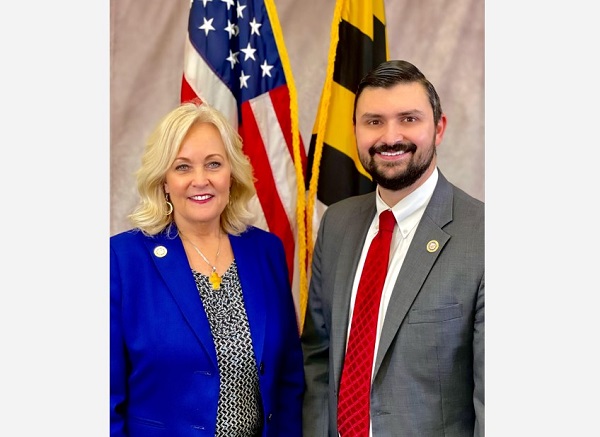The following is an op-ed piece from Delegates Kathy Szeliga and Ryan Nawrocki.
Last week, a press release was issued from Baltimore County regarding membership in the Baltimore Regional Water Governance Task Force, created by the General Assembly earlier this year. We have been asked to share the information regarding upcoming meeting dates with our constituents so that this process will include robust community input from residents and stakeholders across the region. The task force, comprised of 13 members, is charged with making recommendations to modernize the governance of the region’s water and wastewater utilities. They currently operate under half-century-old agreements. The goal is to help ensure residents receive high-quality water and sewerage services.
While these are all necessary and lofty goals, we are concerned that the appointed task force does not include enough Baltimore County representation. Many of the appointees are not living and breathing the true ramifications of the broken water/sewage systems in Baltimore County. For example, the seeming incompetence of the initial decision to allow the toxic wastewater from the Ohio train derailment to come to Baltimore came from higher-ups who were not experiencing the fallout of the failed systems. When the decision was announced in March that the waste was coming to the infamous Back River Wastewater Treatment Plant, this was just one month after the Plant had a two-alarm fire. The plant has seen frequent sewer overflows into the river, which eventually makes its way to our most precious natural resource – the Chesapeake Bay. The Back River Wastewater Treatment Plant was taken over by the State of Maryland recently because of its dysfunction. We were also told that the Dundalk community last year reported seeing “black excrement” floating around in the river from the failures of the plant.
While Governor Moore claims that “Safe drinking water and a clean environment are basic rights” and that he is “committed to working with Mayor Scott, County Executive Olszewski, and other regional partners to make sure that our water system in the Baltimore region is a national model,” we were met with silence when pressuring him to publicly state his opposition to the EPA’s decision to bring Ohio’s toxic wastewater to Maryland.
This situation must be addressed by the task force and too many issues have been overlooked. Thankfully, we worked diligently to stop Maryland from becoming Ohio’s toxic waste dump this past March. Then, rumors began to swirl again that the wastewater was coming back to Baltimore, but this time to be treated and returned by train car to Cleveland for disposal. Can you imagine the dangers of transporting these chemicals across hundreds of miles? Again, we asked why a treatment plant couldn’t be chosen closer to the disaster site. As of now, the contaminated stream water has not yet been approved for final disposal in Cleveland; therefore, shipment to Clean Harbors Baltimore has not begun, and there is no indication of when, or even if, it might occur. The Maryland Department of the Environment has requested that Clean Harbors Baltimore advise them if there is a change in the situation, and we are in regular communication with them as well to receive updates.
Another concern that has been brought to our attention comes from constituents who live on Pike Place in the Seven Courts neighborhood in Perry Hall. Recently their sewer line needed to be replaced and a new repair mechanism was used called a cured-in-place pipeliner. The residents shared with us, “Last summer, they attempted this procedure, and it was an unmitigated disaster during which we could not shower, go to the bathroom, wash our clothes or clean our dishes for nearly a month. We do not want this happening again, and we want the drain pipes replaced in a conventional manner, not relined with dangerous chemicals. This process of relining old pipes is making people sick all over the country. Please see this article in USA Today.”
A representative from The Department of Public Works said recently that they were collecting a closed circuit video of the sewer line that they attempted to rehab last year to confirm the sewer’s current state after removing the failed liner. Then, another community meeting was held with residents to update them on the upcoming plans. Public trust in these Departments is waning and the task force must face these residents’ valid concerns.
Currently, residents of both Baltimore City and Baltimore County jurisdictions are served by water and wastewater systems managed by the Baltimore City Department of Public Works. The regional drinking water and wastewater systems, owned and operated primarily by Baltimore City, now serve as many as 1.8 million residents across Baltimore City, Baltimore County, and other surrounding jurisdictions. However, under existing State law, Baltimore City bears the sole responsibility for the water supply and wastewater operations, maintenance, and capital investments, while Baltimore County is the sole surrounding jurisdiction paying a proportionate share of these costs. It is frustrating for County residents when a waterline breaks and they have to wait for Baltimore City to send someone out! It is inefficient and always takes longer than it should. We believe that Baltimore County water should be in the hands of Baltimore County. For instance, the Loch Raven Reservoir is owned by the City. We do not want Baltimore City controlling our water or making County residents pay for their water.
The Baltimore Regional Water Governance Task Force will submit their final recommendations to the Governor, Speaker of the House, President of the Senate, the Mayor of Baltimore City, and the County Executive of Baltimore County by January 2024.
Do you value local journalism? Support NottinghamMD.com today.

